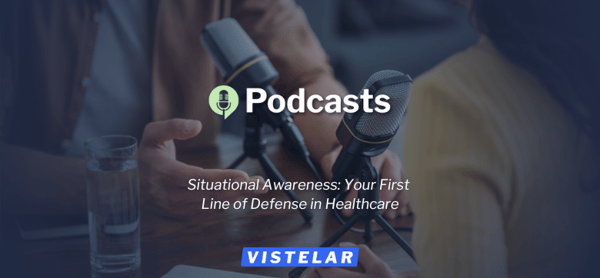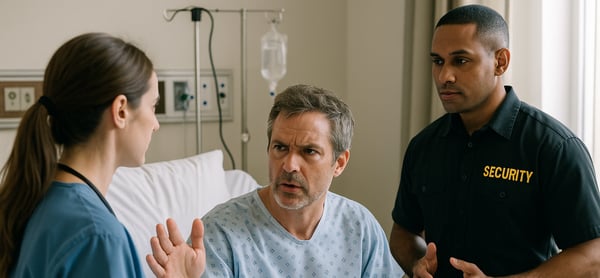In healthcare settings, every interaction carries the potential to either heal or harm. Even a routine medical encounter can quickly transform from a healing opportunity into a re-traumatizing experience. As healthcare professionals, understanding trauma-informed communication isn't just beneficial—it's essential for providing compassionate, effective care that honors the dignity of every...
Posts about Education (2)
Verbal De-escalation: Essential Skills for Healthcare Professionals
Healthcare environments are high-pressure settings where emotions can run high and tensions can escalate quickly. With 76% of emergency room nurses reporting experiences with workplace violence and The Joint Commission noting a consistent increase in violence-related incidents over the past five years, the ability to prevent escalation when able and de-escalate situations verbally when necessary...
Why Compliance Training Won't Save Your Reputation
Healthcare organizations invest heavily in regulatory compliance training—from annual workplace violence prevention modules to harassment awareness courses. Administrators track completion rates, verify documentation, and prepare for surveys with meticulously maintained records. When regulators visit, these training programs provide evidence of "reasonable efforts" to address workplace safety...
Situational Awareness: Your First Line of Defense in Healthcare—Podcast
“Situational Awareness: Your First Line of Defense in Healthcare" — Episode 33
Co-host: Marcus—former healthcare security director
Co-host: Natalie—nurse practitioner and clinical team leader
Subscribe to our podcast on Apple Podcasts
How Much is Conflict Costing You?
Healthcare leaders track countless financial metrics—from length of stay and operating margins to supply costs and reimbursement rates. Yet one of the largest cost drivers in healthcare remains largely unmeasured and unmanaged: workplace conflict.
When 'Nonviolent' Isn't Enough: Redefining the De-escalation Standard
Healthcare organizations have embraced de-escalation training as a cornerstone of workplace violence prevention. These programs typically aim to prevent physical aggression through verbal and non-verbal techniques that calm agitated individuals. Success is often defined simply: if no one gets hurt, the de-escalation is deemed successful.
Incident Reporting Isn't Enough: What Your Team Isn't Telling You
Healthcare organizations rely heavily on incident reporting systems to identify and address safety concerns, including workplace violence. These systems typically capture serious events like physical assaults, sexual harassment, or explicit threats. Organizations track these reports, analyze trends, and implement targeted interventions based on the resulting data.
But what about all the events...
Conflict Trigger Guards: Emotionally Intelligent Communication Tools for Healthcare
“Conflict Trigger Guards: Emotionally Intelligent Communication Tools for Healthcare" — Episode 32
Co-host: Marcus—former healthcare security director
Co-host: Natalie—nurse practitioner and clinical team leader
Subscribe to our podcast on Apple Podcasts
Verbal Triage: A Necessary Step in Violence Prevention
In healthcare environments where resources are limited and demands are high, triage represents a fundamental organizing principle. Clinical triage sorts patients based on acuity to ensure appropriate resource allocation. Yet when it comes to violence prevention, many healthcare organizations lack a systematic approach to early assessment and intervention. The result is reactive rather than...
What's Missing from Your Safety Drills?
Healthcare organizations conduct regular safety drills to prepare for emergencies ranging from fires and natural disasters to active shooters and mass casualty events. These drills typically focus on logistics, protocols, and technical procedures—evacuating patients, establishing command centers, allocating resources, and coordinating with external agencies.












